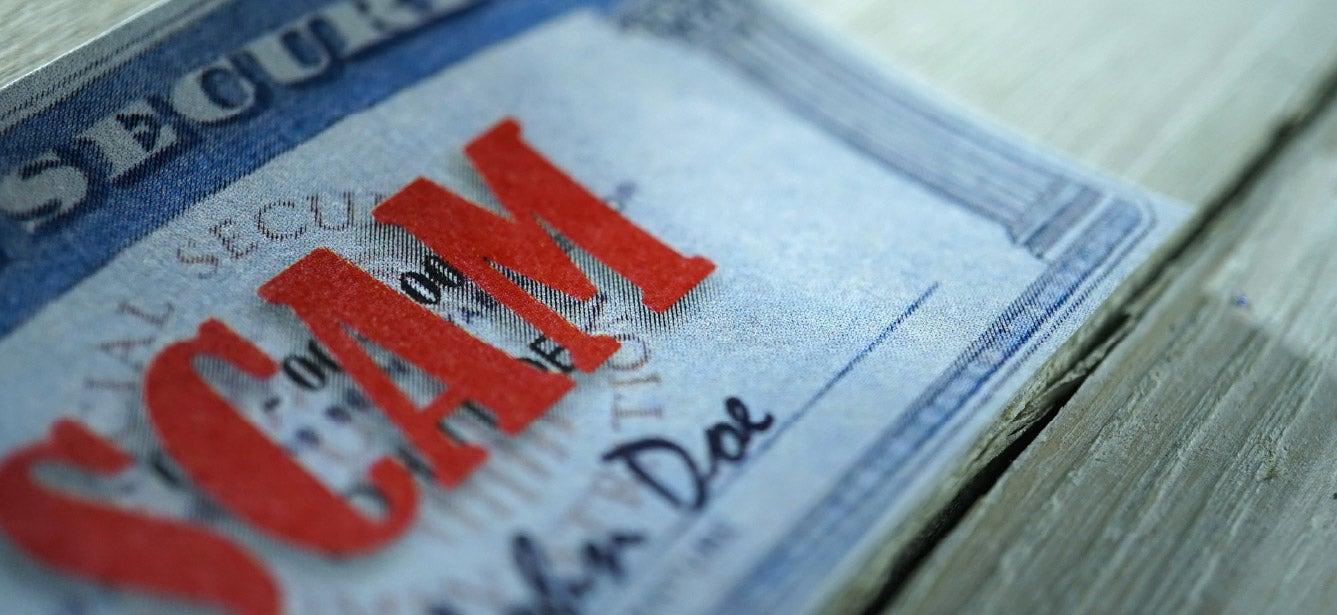
Related Topics
The Social Security system is designed to provide basic financial benefits for workers after retirement. According to the Social Security Administration (SSA), on average each month nearly 68 million Americans will receive a Social Security payment in 2024, totaling roughly 1.5 trillion dollars throughout the year.1
While these monthly payments are a lifeline for many older Americans, recipients are prime targets for scammers and thieves. Social Security scams are a growing problem. In 2023, consumers reported losing more than $126 million to these types of scams.2 The SSA Office of the Inspector General (OIG) reported a 22.1% increase in Social Security-related scams from the start of fiscal year 2023 to the start of fiscal year 2024.3
As with all scams targeting older adults, knowledge is empowering. Understanding the signs of a Social Security scam will allow you to avoid fraudsters and keep your money and personal details safe.
What are common Social Security scams?
Scammers are always refining their approaches in a constant effort to stay a step ahead of consumers. However, there are basic schemes that tend to surface time and again. Below are four Social Security scams to be aware of.
1. An SSA agent needs to meet you in person to collect a payment.
With this newer type of Social Security scam, someone impersonating an SSA OIG agent contacts you and asks you to meet them face to face to make a direct cash payment. They may claim you were overpaid Social Security funds or you owe a fee of some kind. This is an especially dangerous scam, since it can put you in physical danger. In reality, SSA agents will never ask you to meet them in person to hand off cash.
2. Your Social Security number and benefits will be suspended unless you act right away.
With this Social Security scam, an imposter pretending to be from SSA (or even the police) says your Social Security number (SSN) has been frozen due to alleged criminal activity. They may ask you to verify your SSN to resolve the problem. They might also, to “reinstate” your SSN and benefits, request a payment in the form of gift cards or a money transfer (via a digital payment platform like Zelle®, CashApp, or Venmo). The scammer may even threaten arrest if you don't comply.
3. You’ve been paid too much in Social Security benefits and you must pay it back, or you owe some kind of fee.
In this case, a scammer contacts you by phone, email, and/or text message. They explain there’s a problem with your Social Security account, and you must pay to continue receiving benefits. This payment may be intended to correct an alleged overpayment of benefits, or it may be to satisfy some kind of penalty, fine, or administrative fee.
You may be asked to remit payment in the form of gift cards, cryptocurrency, or money transfer through an online payment platform.
4. SSA requires additional information to continue your benefits.
This Social Security scam involves an imposter contacting you via phone, email, or text requesting additional personal information. The caller may say you’re eligible for a payment increase—or that your benefits will be terminated if your account is not verified. They might ask you to confirm details over the phone, such as your bank direct deposit information or SSN.
Communications from Social Security scammers can be very convincing. Imposters often use real names and phone numbers of SSA or OIG employees to impersonate official government figures. Some send photos of falsified badges and credentials. Even letters sent out by scammers can appear to be printed on “official” SSA or OIG letterhead. This is why you can’t rely on names or Caller ID to verify something is legitimate. It’s all an elaborate ploy to get your attention and stir up feelings of fear.
How can I recognize a Social Security scam?
A big part of avoiding Social Security scams is understanding how the (real) Social Security Administration operates. SSA does occasionally call people for customer service matters, or in response to a consumer request for a callback. If they call you, it’s usually about a situation you already know about; for example, you recently applied for benefits or you need to update your record. Likewise, the agency will only send you texts or emails if you have requested to receive them.
Rest assured, the Social Security Administration will never:
- Threaten you with arrest, legal action, benefits suspension, or bank account seizure if you don't comply with a request
- Suspend your Social Security number
- Offer to shift your Social Security money to a “safer” account
- Demand you make a payment immediately
- Ask you for specific payment methods—such as prepaid debit cards, gift cards, online payments, mailed cash, or cryptocurrency.
- Ask for personal details or banking information in exchange for giving you a cost-of-living adjustment (COLA)
- Contact you via social media platforms (e.g., Facebook)
- Request that you return a call to an unknown number
Another common tip-off is misspellings or grammatical errors in emails, texts, and other correspondence. All these things are red flags that should give you pause. You could be dealing with a Social Security scam.
How can I protect myself from Social Security scams?
Below are some common-sense practices that can help you steer clear of Social Security scammers:
- Don't act on impulse: Threatening letters or calls from people claiming to be from a government agency can be scary and upsetting. "What we're seeing a lot of the scammers do is prey on these human emotions,” said Andrea Gilman, Chief Marketing Officer at Zelle, during a panel at Age + Action 2024. “They're creating and using technology to make that imposter feel very, very real to a human."
Try to stay alm instead of letting your emotions take over. Talk to a trusted friend or family member for help determining your next steps. - Don't click on any links: Resist the urge to click on links, open attachments, or call phone numbers that appear in unexpected emails or texts. To verify if a communication is real, contact SSA directly using the information listed on their website.
- Avoid answering calls from unknown numbers: If you don't recognize the number, let it go to voicemail. That way, you can listen to the message and think through whether it requires a callback. This advice applies even if a number appears to be that of an official government agency (remember, those numbers can easily be spoofed).
- Protect your personal information: Always question a contact you did not initiate. And never volunteer your Social Security Number or account number—to anyone—unless they read the number to you first.
- Protect your money: Scammers won't ask you to write them a check. Instead, they'll request payment forms such as a prepaid debit card, gift card, cryptocurrency, or money transfer via a digital payment platform like Zelle, Cash App, or Venmo. That's because these methods are difficult to trace. If someone claiming to be from Social Security asks you to send a payment this way, it’s a big red flag.
What should I do if I think I’ve been scammed?
If you’re concerned your Social Security number or personal information has been compromised, you can:
- Set up a fraud alert on your credit report, which makes it harder for scammers to set up new accounts in your name. To do this, you must contact the three credit bureaus separately: Experian, Equifax, and TransUnion.
- Call the OIG fraud hotline at 1-800-269-0271 or submit a report online.
For more helpful tips and information on what to do if you believe you’re the victim of a scam, visit the FTC website.
Sources
1. Social Security Administration (SSA). Social Security Fact Sheet. Found on the internet at https://www.ssa.gov/news/press/factsheets/basicfact-alt.pdf
2. Social Security Administration (SSA) Office of the Inspector General (OIG). U.S. Senate Unanimously Passes Resolution in Support of Slam the Scam Day. March 11, 2024. Found on the internet at https://oig.ssa.gov/news-releases/2024-03-11-u-s-senate-unanimously-passes-resolution-in-support-of-slam-the-scam-day/
3. Social Security Administration (SSA) Office of the Inspector General (OIG). Quarterly Scam Update. October 1, 2023 – December 31, 2023. Found on the internet at https://oig.ssa.gov/assets/uploads/quarterly-scam-report-issue-11.pdf




